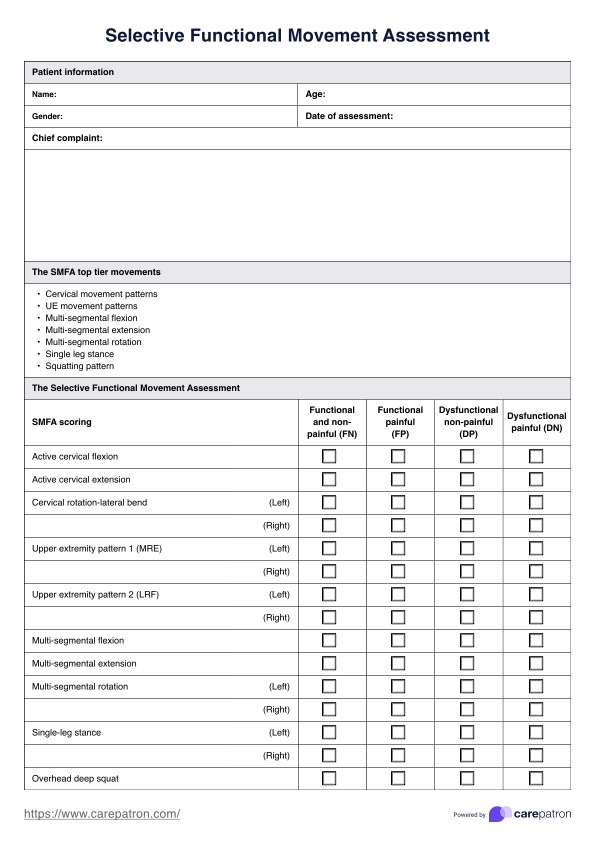The SFMA measures a patient's movement patterns across seven fundamental movement patterns to identify functional limitations, asymmetries, or dysfunctions that may contribute to pain, discomfort, or reduced mobility. These movement patterns include cervical flexion, extension, and rotation; shoulder mobility; multi-segmental flexion and extension; multi-segmental rotation; single-leg stance; and overhead deep squat.

Selective Functional Movement Assessment
Discover Selective Functional Movement Assessment (SFMA), a diagnostic tool healthcare professionals use to identify and address movement limitations and pain.
Selective Functional Movement Assessment Template
Commonly asked questions
The purpose of the SFMA is to provide healthcare professionals with a comprehensive and systematic approach to evaluating a patient's movement patterns, allowing them to identify the root causes of movement dysfunctions, limitations, or asymmetries. By uncovering these underlying issues, practitioners can develop targeted treatment plans that address the source of the problem, leading to more effective and lasting results for the patient. The SFMA ultimately aims to improve a patient's functional movement, reduce pain, and enhance overall well-being.
To interpret SFMA results, review the patient's scores for each movement pattern (FN, FP, DN, DP). Identify patterns of dysfunction or pain, and determine if the issues are primarily mobility or stability-related. Consider the patient's chief complaint and medical history to prioritize relevant dysfunctions. Develop a targeted treatment plan based on the identified issues to address the root causes and alleviate pain. This comprehensive analysis helps healthcare professionals create effective treatment plans tailored to the patient's specific needs.
EHR and practice management software
Get started for free
*No credit card required
Free
$0/usd
Unlimited clients
Telehealth
1GB of storage
Client portal text
Automated billing and online payments











